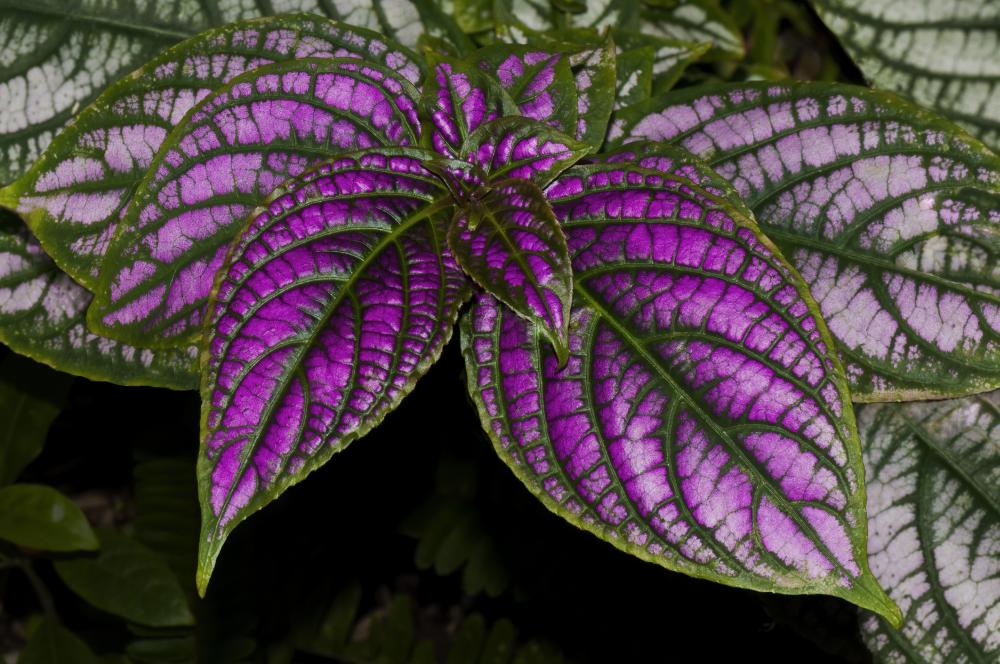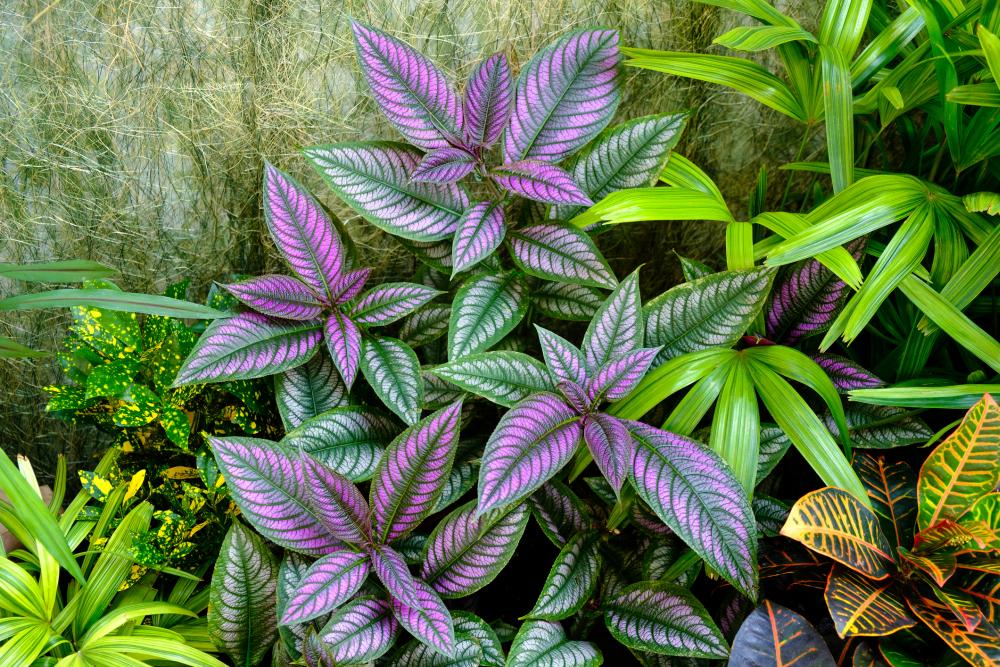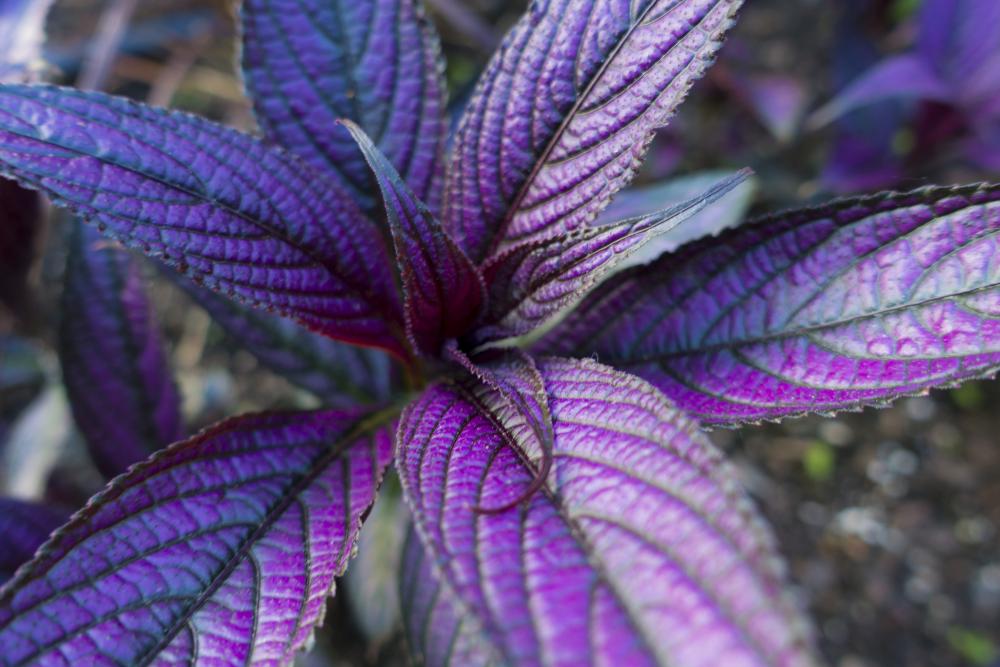How to Grow & Care for the Persian Shield Plant
The Persian shield is a superb tropical plant for landscaping and making borders. If you’re living in a humid environment, this is a perfect choice that won’t disappoint.
The evergreen perennial has a distinct attribute that makes it quite popular—the ability to bloom during winter. In this guide, we’ll check out everything that goes into growing and caring for the Persian shield plant.
More About Persian Shield Plants
The Persian shield plant comes from the Acanthaceae family. Its botanical name is Strobilanthes dyerianus. Figuring why the plant was dubbed ‘Persian shield’ is easy. The perennial has leaves that resemble tiny armor shields, and a silvery metallic gleam on the edges. What makes it a popular choice for gardeners looking for a plant that’s bright-colored is its purplish iridescence. While the plant is dubbed ‘Persian,’ its indigenous place is the tropical regions of Myanmar.
It can hit ages without its stature deteriorating because the plant is more like a shrub and remains evergreen even when growing in hot environments. If you’re living in cooler climates, you can grow the Persian shield as an annual. So far, the major selling point that makes the perennial a densely sought-after houseplant is its capacity to bloom during winter. What’s more gratifying to most growers is it not only stays radiant inside containers but can be grown on outdoor flower beds. Its mature height will range between 3 to 4 inches tall, while the width will roughly be 2 or 3 feet.
Persian Shield Caring Tips
Flowering & Fragrance
The Persian shield blooms around late fall or winter. It produces purple flowers with a bluish tone on the edges. However, if grown as an annual, the plant might fail to bloom. The flowers are usually miniature-like, and the size of the leaves tend to outdo them. They’re insignificant, but their petite conical spikes make them quite appealing.
Soil Requirements
When preparing the soil structure for growing your Persian shield, you want to keep it at a neutral pH range. It can also keep up with slightly acidic soil. For lush foliage and a sturdy root system, keep the soil pH anywhere between 5.5 to 7.5. The plant develops quite opulently when growing in rich and organic soil. And while it prefers more humidity during the growing seasons, the Persian shield can’t tolerate that it takes unusually longer to dry up. Grow this stunning perennial inside a container with enough drainage holes to let out excess moisture if you’re looking to keep the medium indoors.
Use soil that has rich organic matter and is permeable enough to let water drain without a snag. Making amendments to help the soil its rate of moisture retention is also something worth mentioning. To keep it moist, add some compost, peat moss, or vermiculite to the potting soil. Mulching can also potentially keep your Persian shield hydrated at all times if it’s growing outdoors.
Potting & Repotting
This evergreen perennial looks incredible when growing inside a sizeable container that fits it compactly as the plant grows older. If you want the younger plants to reach their maximum size, repotting them once every year would be necessary. Also, when your Persian shield becomes root bound, the obvious thing to do would be to transplant it. Transplanting also gives you the chance to replace the old soil with one that’s revitalized with essential nutrients. One common sign that tells whether it’s time for repotting is if parts of the plant—especially the stems—are becoming leggy. The Persian shield can also get leggy during winter when it’s desperately in search of light and humidity.
Watering
The evergreen houseplant needs to be watered more frequently compared to most other species in the Acanthaceae family. When this plant is in its early sprouting stage, you’ll need to moisten the soil at least once each day. Drooping will start to occur if the plant isn’t getting enough moisture. If your Persian shield is receiving less water, then it will subsequently need more shade. After shedding some leaves, it’s possible for the plant to bounce back once you rectify the watering intervals. When growing outdoors, mulching would help significantly with moisture retention. Always check to see whether the first 5’ inches of the soil are moist. Once you notice that the soil is getting dry between the watering intervals quite fast, it would be best to moisten it more frequently. If the soil is able to retain some moisture, there won’t be any need for intense feeding.
Feeding
When the foliage is a bit pale, you can make the best use of slow-release plant food. Make sure to follow the instructions on the label before using any fertilizer on your Persian shield plant. To avoid burning the roots, you want to dilute the fertilizer at half its strength. Pick a balanced NPK fertilizer and feed your Persian shield once every two weeks during the growing season. The plant needs nitrogen for optimal growth, while the other two components will help with the development of healthy roots. During winter, there won’t be much need for using fertilizer as the growth hormones tend to go into dormancy around this season.
Light & Temperature
Grow the Persian shield in a location that receives bright but filtered light. Aim for partial shade conditions to keep the leaves from getting scorched. The plant is accustomed to growing under trees, so try to mimic its indigenous place, especially if you’re living in a hot climate. Homeowners living in regions where the sun is ever hot and intense will need to look out for a shady location, mostly if they want to grow the plant outdoors. It would be difficult for the plant to achieve its distinct and vibrant purple tone when exposed to excessive heat from the sun. A shadier location would help make the plant have a vivid foliage color throughout the seasons. On the other hand, a cooler environment would inhibit the chlorophyll production process that’s responsible for the formation of sprightly foliage color. For this reason, you’ll need to move the growing medium to a sunnier spot during summer.
Growing your Persian shield outdoors but inside a container would make things much easier when overwintering it. During its lifetime, the plant prefers a slightly humid environment and temperatures above 60 degrees Fahrenheit. When growing under USDA hardiness zones 9 to 11, the plant will naturally begin to develop some hardy traits. It’s worth noting that your Persian shield might die when growing in zones 7,8 and 9 during mild winter. During the next season, the growth hormones will rejuvenate, and the plant will regrow once the conditions are optimal. Keep it in a humid environment to protect the foliage from looking offbeat. If the plant is constantly exposed to dry air, the leaves will begin to drop and appear faded.
Grooming & Maintenance
Maintaining this plant’s ornamental value isn’t a daunting task. Little tender care is required even during the growing seasons. The only lengthy task you might need to do is preparing the Persian shield for overwintering. Get rid of any leaves that look overly faded to conserve the plant’s grand look. To enhance bushier growth, pinch it back once the plant matures.
How to Propagate Persian Shield Plants
You can propagate the Persian shield plant using seedlings or stem cuttings. Propagating using seeds might take a bit longer to show tangible results. Seeds will germinate under warm and constant temperatures ranging between 55 to 64 degrees Fahrenheit. Overwintering is also an option for regrowing the Persian shield once the frosting period is over. We recommend propagating the plant using softwood cuttings from a healthy mother plant. As the Persian shield continues to age, the stems tend to get sturdier and woody. Take cuttings that are between 2 to 3 inches long, and cut them right below the nodes.
Get rid of the lower leaves, then insert the cuttings in a soilless-based medium like peat. Alternatively, you can place the cuttings inside a transparent glass jar half-full of water. Within two weeks, roots will have developed and will be about 2 inches long. Move the cuttings into individual containers, add the potting soil, mist it, then leave the medium in a warm and humid environment to enhance the conditions for sprouting.
Common Pests & Diseases
The Persian shield has its ways of staying out of trouble. It isn’t bugged by any serious pests or diseases. All you need to focus on is giving the tropical plant optimal growing conditions throughout the seasons. Since this plant has so many tropical attributes, the foliage might start wilting if the soil fails to retain some moisture. If wilting occurs, you can revert the situation by scaling up the watering intervals. Make sure to keep the soil evenly moist and keep the medium in a humid environment. The other condition it’s likely to suffer from is the fading of leaves. Keep the growing medium in a position where it gets enough bright, indirect light.
At the same time, you want to offer some protection from the sun if your Persian shield is growing outdoors. Leaf yellowing might also occur if your plant is infested by spider mites. You also want to watch out for fungus gnats. These bugs find the moisture in the soil a habitable spot for laying eggs. To get rid of these pests, you can spray neem oil on the affected areas. It’s an effective remedy that weeds out any harmful pests without leaving any adverse effects on the plant, unlike most synthetic pesticides.
Even though neem oil can get rid of the already existing fungus gnats, it prevents adults from laying eggs, so it would act more like a defense mechanism. The Garden Safe multipurpose insect killer is a perfect alternative for suppressing pest infestations. Since this plant is accustomed to humid conditions, it’s rare for it to suffer from fungal infections like powdery mildew.


